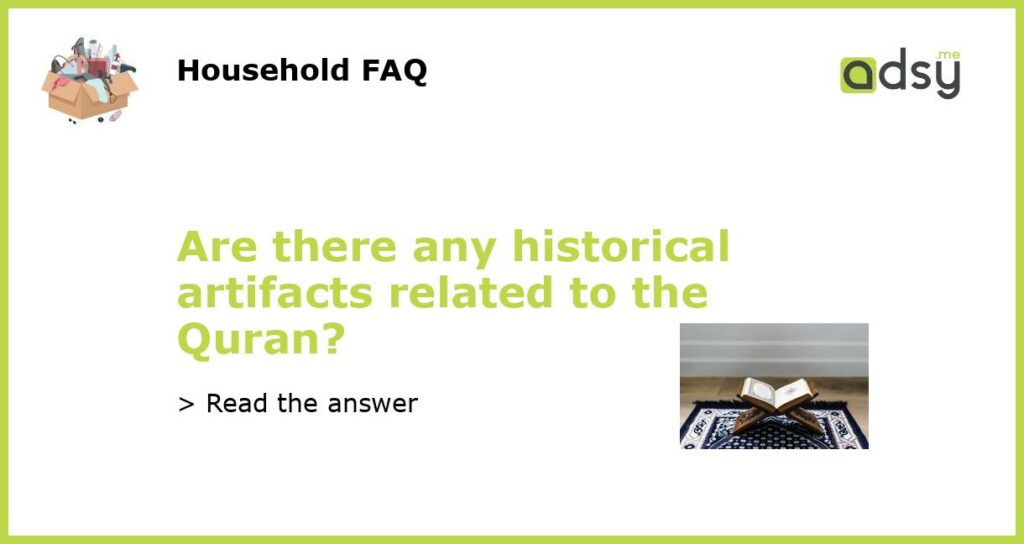The Importance of Historical Artifacts
Historical artifacts play a crucial role in shaping our understanding of the past. They provide tangible evidence of historical events, cultures, and beliefs. When it comes to religious texts like the Quran, historical artifacts can shed light on its origins, development, and interpretation. These artifacts offer a glimpse into the lives of those who lived during the time of the Quran’s revelation and provide valuable context for scholars and believers alike.
Manuscripts of the Quran
One of the most significant historical artifacts related to the Quran is the manuscripts. These handwritten copies of the Quran hold great value in Islamic history and scholarship. The earliest manuscripts date back to the seventh century, not long after the Prophet Muhammad received the revelations. One of the oldest known Quran manuscripts is the Birmingham Quran, which is housed in the Cadbury Research Library at the University of Birmingham in England. This manuscript is believed to date back to the mid-seventh century, making it one of the earliest existing copies of the Quran.
Islamic Calligraphy and Art
In addition to manuscripts, Islamic calligraphy and art also hold historical significance in relation to the Quran. Calligraphy, the art of beautiful writing, has been an important aspect of Islamic culture for centuries. The Quranic verses are often beautifully written and embellished in Islamic calligraphy, showcasing the reverence given to the words of the Quran. These artistic expressions provide insight into the visual interpretations of the Quran and the cultural significance placed on its teachings.
Ancient Qurans and Fragments
Archaeological discoveries have also unearthed ancient Qurans and fragments that offer valuable insights into the early history of the Quran. For example, the Sana’a Quranic manuscripts, discovered in Yemen in the 1970s, provide variations and potential textual changes that have sparked discussions among scholars. The fragments found in the Kufa Mosque in Iraq and the Great Mosque of Sana’a in Yemen also contribute to our understanding of the Quran’s early transmission and textual development.
Historical Sites and Artifacts
Lastly, historical sites and artifacts related to the early Islamic period provide valuable context for the Quran. For instance, the Dome of the Rock in Jerusalem, one of the holiest sites in Islam, is adorned with Quranic verses and serves as a visual representation of the significance placed on the Quran. Additionally, ancient mosques, such as the Great Mosque of Kairouan in Tunisia or the Great Mosque of Cordoba in Spain, feature Quranic inscriptions and architectural elements that reflect the importance of the Quran in Islamic culture.






